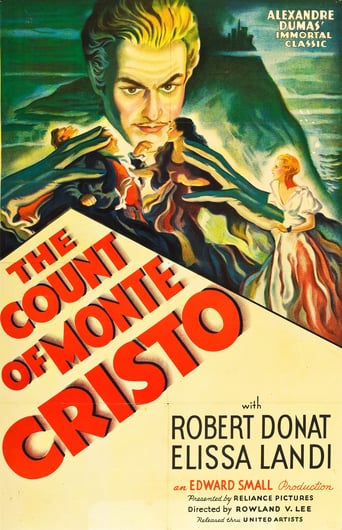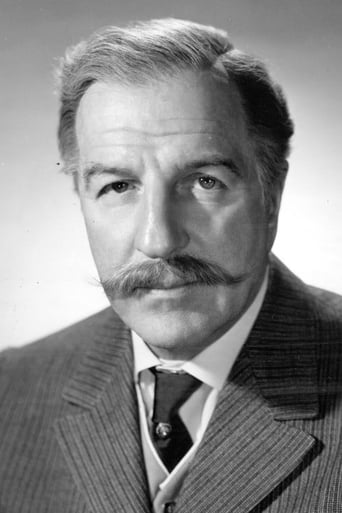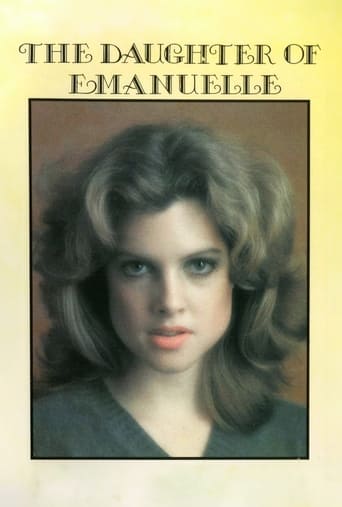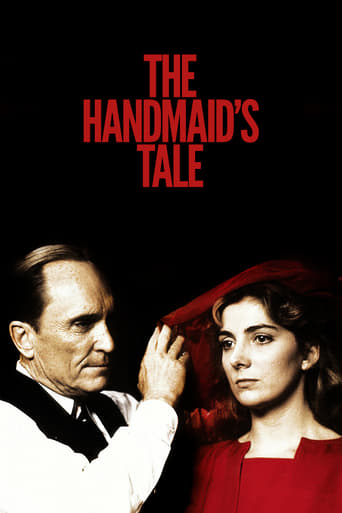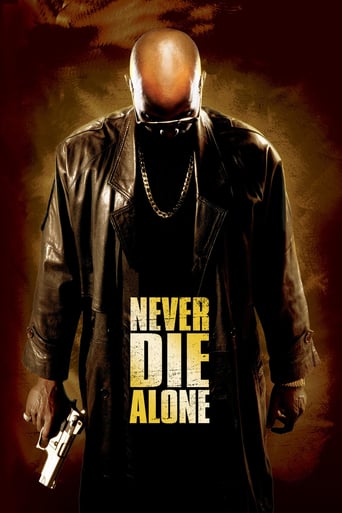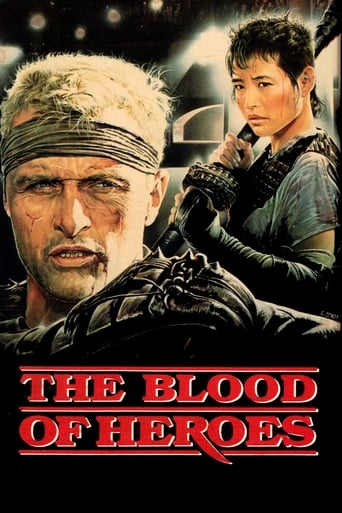The Count of Monte Cristo (1934)
After greedy men have Edmound Dantes unjustly imprisoned for 20 years for innocently delivering a letter entrusted to him, he escapes to revenge himself on them.
Watch Trailer
Cast
Similar titles
Reviews
The Worst Film Ever
Nice effects though.
Fun premise, good actors, bad writing. This film seemed to have potential at the beginning but it quickly devolves into a trite action film. Ultimately it's very boring.
A great movie, one of the best of this year. There was a bit of confusion at one point in the plot, but nothing serious.
Okay - hands up if you were led here by V for Vendetta. Be honest.But hey - that's very okay. Suffice to say that 1934's crack at Alexandre Dumas' timeless tale of treachery and revenge is a robust and spirited enough adaptation to get your blood pumping as much as everyone's favourite alliterative rollicking revolutionary. The script, while necessarily abbreviated, holds up as one of the more faithful Dumas adaptations as a procedural account of Dantes' methodical vengeful takedown of his betrayers at least until the grand departure of its romantic, very 1930s-populist ending (which is too sweet to excessively fault). Still, the pace is lively and the action plugs along at a compelling jaunt. If the screenplay sometimes dallies with segments spelling out the narrative's themes a bit thickly, it more than compensates with its share of excellent barbed dialogue zingers along the way. Those more familiar with the 2002 Jim Caviezel remake than Dumas' novel might take some adjusting to the pace here, as Dantes' dual with Mondego (restructured as principle antagonist in the remake) is dispensed with fairly early and unceremoniously. Instead, we get a climactic trial sequence (another complete departure from the text), giving Donat a chance to do his best heroic shouting, which feels adequately conclusive in its stead. Being a product of its time, this Count of Monte Cristo's staging restrictions and performance conventions may make it a flatter and calmer rendition than the explosive catharsis our righteous indignation at Dantes' plight might expect or befit (the scenes of Dantes' captivity in the Château D'If in particular feel jarringly civil, compared to the gruelling, inhumane torment Dumas painted). This certainly isn't helped by the somewhat film's cheap, anachronistic costumes, and an overenthusiastic musical soundtrack which soars in to punctuate key emotional moments with such ferocity that it tends to quash rather than heighten their resonance. Still, the film's production values are excellent, juxtaposing some key location footage (Dantes' daring underwater prison escape is perfectly chilly and claustrophobic) with some stellar studio sets - Abbe Faria's cell has the austere artistry of a stained glass window, and Dantes' treasure horde discovery is rousing adventure stuff. Robert Donat is excellent as the titular rogue-hero. He drives Dantes' plunge from chirpy sailor to apoplectically bitter prisoner to debonair aristocrat clouded by acidic ruthlessness with grace and a piercing insistence, handling Dantes' nuances much more deftly than his on-the-nose dialogue. Elissa Landi is also terrific, sliding from warm and giddy to caustic and cautious as his warped love Mercedes, and her bold decision to play up Mercedes' grim detachment rather than mugging for soft focus close-ups throughout the film's latter half plays as appealingly emotionally truthful. Sidney Blackmer and Louis Calhern are appropriately seedy, but a bit too prissy and standoffish to make much of an impact as the villainous Mondego and De Villefort; however, Raymond Walburn is a colourfully boorish, charismatic highlight as greedy, corrupt banker Danglars. Finally, character actor O.P. Reggie is warm slyness personified as the cheekily inspirational Abbe Faria, Dantes' friend in captivity. Released the year before Captain Blood, it's easy to see Monte Cristo settling into the 1930s resurgence of seafaring adventure films. Director Rowland V. Lee feels most at home with Dantes' adventures at sea and crisply energetic sword fights than the talkier melodramatic romantic angst and political intrigue, which are done suitably, but with less pizazz. As such, 1934's Count of Monte Cristo remains a sturdy and heartily enjoyable Dumas adaptation, and one of the more bombastic and abiding costume dramas of Classical Hollywood.-8/10
People who are impressed with 2010's boring and bloated movies might do better with the 2002 version, but persons who enjoy quality movies will take the trouble necessary to locate a VHS copy of this great 1934 classic. Hint: Rare VHS tapes are listed on Ebay.I first saw this in its theatrical re-release in the 1940's paired with Man in the Iron Mask. It's been reissued several times and played on TV numerous times in the 1950's. Edward Small knew how to make this kind of picture. The 118 minute length was unusual back then, but the story moves along at a fast clip. In the 1940's I was a kid and had traveled to New York and no-place else. Since then I've been to Europe many times. Now I can appreciate the attention to detail of the numerous sets, be it prison or royal apartments. But the important thing is the story and the acting. Excellent.The VHS is the colorized version. It looks fine in color, or you can tone down the color and see it as originally made. This movie has made money for 76 years and might someday be issued in DVD. Compare that to the El Stinko movies of 2010 which are usually dead within 6 weeks.Quality is forever.
This version differs significantly from the original Alexandre Dumas story; but, it's still the one to see. Most obviously, the film punctuates Dumas' story of justice through revenge with an ending not at all evident in Dumas' original work. So, "The Count of Monte Cristo" becomes the happier "love story" of Dantes and Mercedes. Notably, she "imagines" saying "I do" to Dantes only; and, his other lover (Haydee) is barely mentioned. Otherwise, the story is very neatly trimmed. And, it's certainly better than several imitations.Under Rowland V. Lee's direction, Robert Donat (as Edmond Dantes) performs exceptionally; his transformation from innocent, unsophisticated youth to the older, vengeful "Count" is beautifully conveyed. In the later half of the film, Mr. Donat's facial expressions approach horrifying. Donat's escape from prison, and his calculating revenge on Sidney Blackner (as Mondego), Raymond Walburn (as Danglars), and Louis Calhern (as Villefort) are the better parts of the movie. Elissa Landi (as Mercedes) gives a lovely performance; she ideally matches Donat's early naiveté, and later maturity. Douglas Walton (as Albert) offers, perhaps, the greatest support; he not only recalls the lovers' earlier youth, but also contrasts their later maturity.******** The Count of Monte Cristo (1934) Rowland V. Lee ~ Robert Donat, Elissa Landi, Douglas Walton
The good news is that this turns out to be, as I hoped it might, my "long-lost Monte Cristo" -- the film I once caught the end of, thanks to the BBC, on holiday twenty years ago, and have never been able to find again since. The bad news is that, alas, the part I missed then isn't actually nearly so good as the remainder...The Reliance Pictures production of "Count of Monte Cristo" is a queer mixture of success and banality; of studio polish and poverty-row shortcuts; of efficient editing and crass musical indirection; of genuine emotional power and thumping cliché; of briskly-moving adaptation and bizarre moments of staging (revolving witness-box, anybody?) A literal version of Dumas it is not -- one would not expect it from any film spectacular of this period -- but many of the changes made are entertaining or effective, and the happy ending provided works at least as well as Dumas' rather unsatisfactory version. The meandering original is reduced to a bare two hours' running time by dint of concise scripting and cutting out most of the sub-plots involving the de Villefort and Morrel families, an attempt which is by and large successful. It works less well at the beginning, where there are simply too many unidentified characters popping up and scheming without any of them really being established properly, particularly as Morrel and de Villefort's father are then pruned from the plot, never to appear again. And de Villefort's downfall as presented here really doesn't work for me: lacking the damning evidence of infanticide, the script doesn't seem to come up with any terribly convincing alternative to turn the tables on the prosecutor. On the other hand, introduced material such as Mercedes' (completely uncanonical) aristocratic snob of a mother, or the tableaux in praise of Fernand at which Haydee accuses him, works very well.Ironically -- given the Hollywood studio's doubts as to their unknown English import's ability to pull off anything but a fresh-faced lead -- Robert Donat shines mainly in the latter half of the picture as the older, embittered and sophisticated Monte Cristo. His guileless Dantes makes little impression, for it could be any generic juvenile lead role -- the character as written is not so much naive as uninteresting. Donat fares better where he can give a sense of some hidden depths to the part, and his best features are his strong eyes and brows rather than his cheery grin. As Monte Cristo, however, he is both debonair and dangerous, an intelligent schemer with a dry wit at his enemies' unknowing expense, and he is supported ably by both Douglas Walton as the young Albert and Elissa Landi as Mercedes.It was Miss Landi's performance with which I was truly impressed here; she ages with utter conviction from the wilful girl to the resolute mother, and lends her scenes opposite Donat the real impact that is lacking from so much of the film. In a plot that has been re-angled to concentrate far more closely on the Edmond/Mercedes relationship, her role is vital, and her character provides most of the emotional engagement of the story, from light-hearted charm to heartbreak (Valentine de Villefort, here paired off with Albert, is a mere cypher in comparison).The film starts off in outright formulaic guise, from Napoleon's appearance (in full uniform and cocked hat, with his hand duly thrust in his breast 'like that') to the standard storm-at-sea sequence with water poured across the screen. It continues to suffer from crude musical underlining more or less throughout, almost sabotaging for example Donat's scene with the dying Abbe Faria, which he otherwise pulls off with conviction, while certain characters, such as Morrel and the mute Nubian Ali, appear to have been retained despite the loss of the plot elements which actually involved them (possibly as a result of cuts to the script later in filming?) Overall, however, the adaptation does a pretty good job of conveying information quickly and concisely -- Albert's entire Italian adventure is dealt with effectively in a matter of a few minutes with none of the essentials lost, and Haydee's brief role introduced without any seeming contrivance. It borrows little in practice from Dumas' wordy original save the bare outlines of its plot, and sometimes not even those; but as an initially uninspired Hollywood screen adaptation it improves considerably as it goes on. Literary fidelity isn't everything, and if it were not let down by certain sections I would have rated it considerably higher; alas, this production remains an odd mixture of the powerful and the pedestrian.
